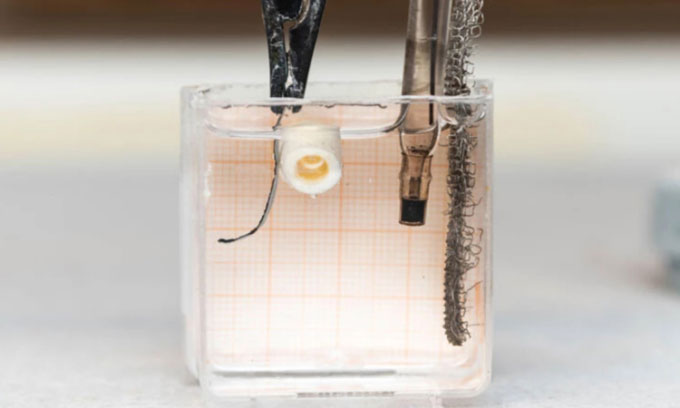Scientists worldwide are developing new materials for creating robots that can expand and fill bone defects in the future.

Material strip (far left) before wrapping around chicken bone (white). (Photo: Olov Planthaber)
Complex bone fractures are not easy to treat and sometimes require the removal of the damaged bone, replaced with bone harvested from elsewhere in the body. However, thanks to a new material, tiny “bone-making” robots may offer a gentler solution in the future, as reported by New Atlas on January 17. The new research was published in the journal Advanced Materials.
The new technology is being developed by a team of scientists at Linköping University in Sweden and Okayama University in Japan. It is inspired by the soft and flexible structure of the skulls of newborns, which allows them to navigate through the birth canal before hardening into bone.
The new material takes the form of a thin alginate hydrogel strip derived from seaweed. One side of the gel is coated with an electroactive polymer known as polypyrrole (PPy), while the other side contains biological molecules called plasma membrane nanofragments (PMNF) sourced from cells.
When the team applies a low-voltage electric current to the material, PPy reacts by increasing in volume. Since the polymer is only on one side, this reaction causes the material strip to bend to one side. By cutting the material into various shapes, the researchers can make it bend into different forms, such as semicircles or spirals. Meanwhile, because PMNF originates from cells involved in bone development, they will naturally mineralize and harden like bone when placed in the human body.
The scientists hope to position these tiny robots made from this material in complex bone fracture sites in the future. They will expand and fill the bone deficiencies when an electric current is applied. Afterward, they will harden into bone and patch the defect.
In experiments, the team successfully caused the material strips to wrap around chicken bones in a cell culture environment (chemically similar to the human body). These strips then developed into artificial bone that fused with the chicken bone.


















































